With platforms, like Facebook, Instagram, and YouTube, which allow a variety of content types, Twitter may seem like a lost cause in terms of marketing. Videos on Twitter look not as engaging as on YouTube or Instagram, and Twitter doesn’t allow posts longer than 280 characters, compared to Facebook.
Seems like Twitter is rather bland in terms of content marketing and is not the best choice to promote your small business online.
Or is it?
Let’s debunk this myth:
- 70% of small businesses are currently on Twitter;
- Twitter is still among the biggest social platforms, with a market capitalization worth $28.82 billion;
- 85% of small businesses use Twitter to provide customer service;
- The average Twitter user follows five businesses.
As you can see, Twitter users have active interactions with businesses on Twitter, and small businesses continue using Twitter as an important part of their content marketing strategy.
Then, since all tweets are mostly written text, how can you present your content in an engaging way?
That’s the purpose of this article.
So, without further ado, let’s dive into our comprehensive guide to writing tweets for your small business.
Step #1: Who are Your Followers?
Any content writing strategy starts with audience analysis. If you already have the following base on Twitter, take a closer look at who your followers are.
By going to Twitter Analytics, you get access to social data, collected from your followers, which indicates their age, gender, language, location, as well as their interests. When writing tweets, this data should be taken into account and your content should be tailored according to it.
Your audience’s interests will give you a number of the topics to touch upon in your tweets:
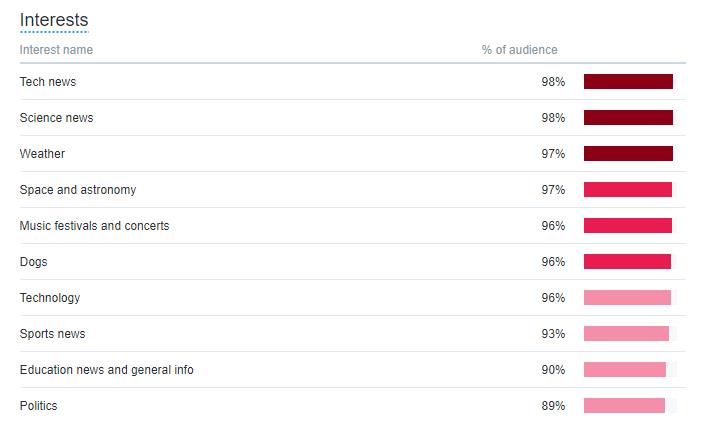 Twitter analytics
Twitter analytics
Besides, at this preparatory stage, you should also consider other demographic factors, like language and location (to figure out the best time to post your tweets):
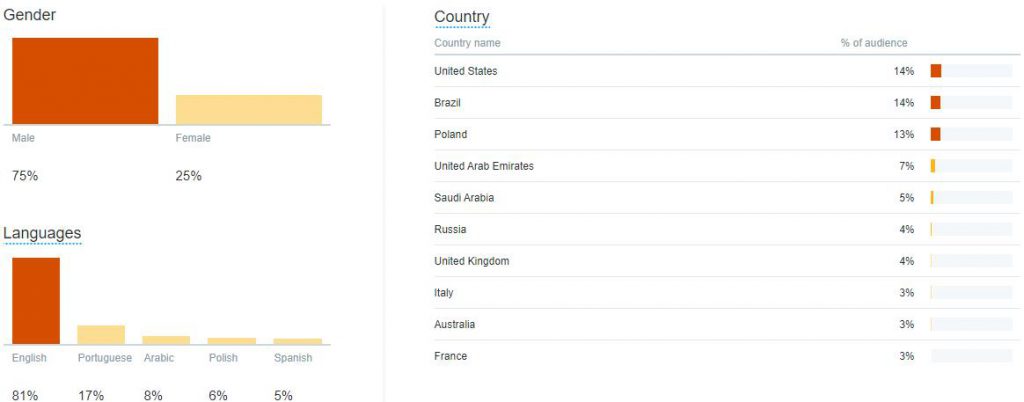
Regarding the language of your tweets, you need to take a look at the percentage of followers who speak different languages. From the graph above, you can see that the majority of users speak English and Portuguese, thus it’s desirable to have tweets in both languages.
Content localization is crucial for the success of your Twitter strategy. “Since Twitter is mostly for passing quick news and is mostly about written content, you need to make sure that all your audience has equal access to your content”, says Neightan White, a localization specialist at a translation review site IsAccurate.
Indeed, writing bilingual tweets can help you expand your outreach and make sure that the majority of your followers get the idea that you’re passing on to them.
However, with a limited number of characters per tweet, it is a challenge to write bilingual tweets. Daftcode, a mobile product development venture that has the majority of English- and Polish-speaking followers, solved this problem by writing tweets in English and creating visual content for these tweets in Polish:

Image credit: Daftcode
With such content you kill two birds with one stone – you deliver a bilingual content, understandable to your audience, and increase your outreach.
Step #2: Outlining Your Personality
As you’ve already taken a look at audience analytics on Twitter and know, which of their interests you’ll touch upon and in what language(-s), it’s time to talk about what values define your small business.
Knowing, who your target audience is not enough for a successful Twitter strategy. The message that carries the values of your business is what will influence your target audience. So, before you start writing your tweets, analyze your business’s personality.
Consumers appreciate brands who channel their personalities through their content. According to Brand Buddha, 80% of consumers say ‘authenticity of content’ is the most influential factor in their decision to follow a brand, and 78% of consumers believe that companies with branded content are the most trustworthy.
You can work on defining the personality of your business and the idea behind it by asking a set of basic questions:
- What is important to your business?
- What idea brought your company together and continues to hold it together?
- Will this idea still support your business in a crisis?
- Do you expect this idea to evolve into something bigger in the future?
Once you know what drives you, it will be easier to choose content that you will channel your personality through.
For inspiration, take a look at the brands that carried their main message and personality behind it through time, since being a small venture and after becoming and world-renowned success. Nike is one of such shining examples. Their Just Do It! slogan has been with them since forever, and it is the golden thread that runs through all their posts on Twitter (and content on other social platforms):
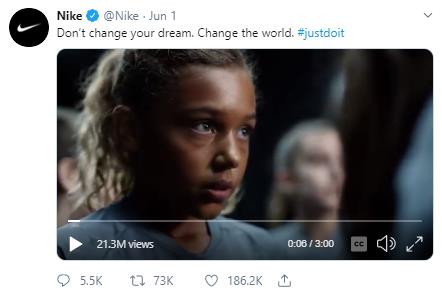
Image credit: Nike
You can see the progression, with which they delivered their main message: first, motivating athletes to chase their individual dreams, and ending with using their dreams to change the world. Very inspiring and engaging (judging by the number of likes, comments, and re-tweets).
Every small business owner dreams of their venture becoming an international success. For this, you need to carry the same message and stay true to your personality from the very beginning, incorporating your values in your content. Moreover, bringing your personality to the front in content marketing on Twitter is necessary not only for your small business to grow, but to stand out from the competition as well.
Step #3: Experimenting with Content
Now, let’s brainstorm the ways, through which you will express the personality and the message your small business wants to deliver.
-
Incorporating Humor
Everyone remembers an all-star selfie, made by Ellen DeGeneres during Oscars in 2014. This selfie broke Twitter and the Internet, being one of the shining examples of viral content. Very quickly, this selfie turned into a trend, which many businesses on Twitter followed:
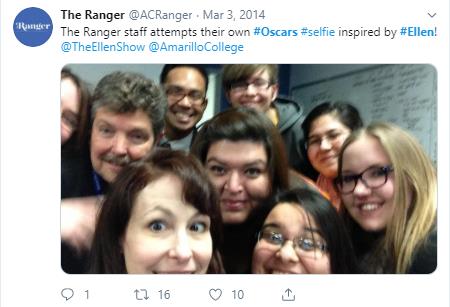
Image credit: The Ranger
Using humor in written content for social media is a tricky technique and may have an unexpected outcome. To make sure that your content is in line with your message and is not offensive to anyone, you can consult a professional writer. Services like Best Essay Education (an online hub for professional writers), Studicus (an online tool where you can find a writer specializing in marketing), or Hemingway App (a tool that analyzes the readability of your tweets) offer a comprehensive check of your content.
In general, incorporating humor in your tweets is a way to entertain your followers. Besides, having such content appear once in a while on your Twitter feed is a nice way to introduce your business from a different perspective.
-
Playing with Content Types
When writing tweets, consider, what other types of content can be incorporated.
According to Twitter for Business, Twitter users prefer the following content types:
- 86% of Twitter users want to see more videos
- 78% of Twitter users support tweets with images
- 44% of respondents prefer just text
- 40% of respondents like seeing GIFs in tweets
- 40% of Twitter users support live streams on Twitter.
Try writing your tweets with different content types in mind. This result in a more cohesive Twitter strategy. Moreover, you get a chance to be creative with more than one idea to deliver your message.
-
Adding Hashtags
Before you add hashtags to your tweets, we advise you to do a hashtag analysis. A hashtag is supposed to help more Twitter users find you, and doing a hashtag analysis will help you make sure that your tweets are visible.
Let’s say, your business is a startup. To help people find your business quicker, you can choose between #startup and #bootstrap, which have the same meaning, but different performance:
#startup

Image credit: Hashtagify.me
#bootstrap

Image credit: Hashtagify.me
You can see that both hashtags have high performance, but in terms of popularity, #startup will bring you better results.
There are two ways of adding hashtags to the text:
- Adding them to the text, which is what the majority of people on Twitter are used to:

Image credit: Dripp
- Incorporating hashtags in text:

Image credit: Indoorway
The choice between these two options won’t influence your tweet’s visibility, as long as your hashtags have good performance. However, the second option takes fewer characters when writing a tweet, so you can make your posts longer.
If you are writing branded content for Twitter, you can also consider adding a branded hashtag, which will eventually become the main pathway that connects your small business and potential Twitter followers.
Step #4: Considering Linguistics & Finishing Touches
What tips work the best for writing tweets in terms of language and linguistics?
Tweets are the easiest type of content to go viral. To help you with that, you can use:
- Viral words and phrases. This list includes words like people, see, make, video, things, tips and phrases like this is the, will make you, what happens when you need to, and many others.
- Most re-tweetable words and phrases, which include you, how to, check out, please, top, etc.
- Wh-questions. In the world of journalism and copywriting, all professionals are familiar with the Betteridge’s law of headlines, which states that every headline that ends with a question mark, can be answered with a Although this law has a humorous subtext, it often works. So, if you don’t want your tweets to be neglected, start them with Wh-questions that require a full answer.
Once you’ve made every effort to make your tweets engaging, you can move over to finishing touches, which include editing and proofreading. You don’t want to miss these steps, as on Twitter you cannot edit your posts:
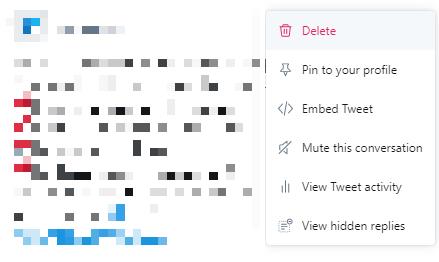
With proofreading, you can use any online tool available online, like Grammarly (machine-learning-based tool that checks grammar, spelling, and style), TrustMyPaper (an online writing service that offers editing and proofreading features), GrabMyEssay (a hub of professional writers who offer proofreading services), or EditMinion (checks grammar and spelling within a few seconds). These tools make sure that you can proofread your tweets quickly and efficiently.
With editing, you need to look back and consider all the points that we mentioned:
- Do your tweets appeal to your target audience?
- Do they represent your business’s personality?
- Are they diverse in terms of content?
- Are they engaging?
- Are they visible (one more hashtag check)?
Double-checking all these points is necessary to make sure that your Twitter strategy is cohesive.
Wrapping Up
The main task of using Twitter for your small business is to stand out. We’re not saying that it will be easy, considering how many businesses actively use Twitter as a part of their content strategy.
With this guide, however, you’ll feel more confident when writing tweets, as this guide not only includes writing tips, but also other important aspects like personality analysis, audience analysis, and hashtag analysis.
What are other writing tips that we may have forgotten? Share them with us in the comments!
Kristin Savage is an aspiring journalist and a contributing writer at WowGrade. She specializes in topics like digital marketing, social media marketing, and sales, as well as dissertation writing, that’s why her works are always well-researched. In her free time, she reads dystopian novels and is planning to write her own.







Leave A Comment